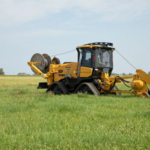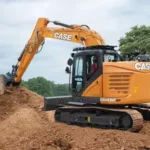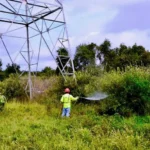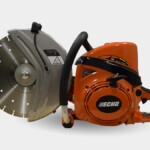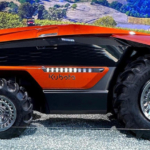 Agricultural engineers at Iowa State University are looking into using drainage water as a cost-effective way to help keep buildings cool during the hottest weeks of summer.
Agricultural engineers at Iowa State University are looking into using drainage water as a cost-effective way to help keep buildings cool during the hottest weeks of summer.
“I think it has a lot of potential,” Iowa State University Extension ag engineer Kris Kohl says.
The system would involve the collection and circulation of drainage water through a network of pipes installed within livestock buildings. The collected water from the field drainage tile would be pumped through the livestock building, then flow through the soil to cool before being recirculated.
The practice is still in the early trial stages, and Kohl says Iowa researchers plan to construct a system to work on a smaller scale, then try it with a full-size livestock building.
“At this point it’s conceptual,” he says.
But Kohl says the system would take advantage of existing resources. It would take inspiration from a traditional air conditioning unit, except instead of using freon it would use water drawn from underground.
“This would use water and basically we would have drainage tubes that would be 60 to 80 feet apart,” Kohl says. “…We’re planning on using water as a recirculating system just like you would freon.”
The water would run into the lines to cool the building, then back into the drainage line underground.
“The soil temperature where I’m at in Iowa rarely exceeds 60 degrees,” Kohl says. “The average temperature where I am is 42 degrees. At 4 feet depth, water rarely would exceed 60 degrees.”
He says the water circulation system could be used in combination with ventilation during the hottest weeks of the summer to help keep temperatures down in livestock buildings.
Kohl says during those hottest weeks, when temperatures approach or exceed 100 degrees, ventilation alone does not keep buildings cool enough, and poultry and pigs do not sweat, so their panting can add moisture to the air and the dew point rises. He says he anticipates this system would keep the dew point down.
Cost is a key factor, as it uses existing drainage water underground.
“The whole concept of this is trying to keep the cost down,” Kohl says. “We would probably only utilize it one to two weeks a year, when we couldn’t get the temperatures to cool down.”
Of course, keeping temperatures down in livestock buildings during the summer means improved animal welfare and better performance, Kohl says.
During the hot months of July and August, that cooler groundwater could be very useful, he says.
“It would be really nice to use that stored cold water that’s in the ground,” he says.
Kohl calculates for a 10,000-head turkey barn, 800 feet long, it would require about 150 gallons per minute to use the water-cooling system to bring the building’s temperature down to 80 degrees.
A “total drought situation” could change the calculations, but Kohl says a relatively small amount of water could raise the water table.
“It only takes about a half-inch to bring the water table up a foot,” he says. “It would only take a small amount from a well to raise the water level.”
Kohl says the water-cooling system could be a much cheaper alternative to the cost of constructing an air-conditioned building. While there is still research to be done, he says it could be a useful system to deal with temperature extremes in a relatively low-cost, sustainable way.
“I think it certainly has that potential,” Kohl says. “In Iowa and Missouri, we’re in the very center of the continent. We end up with very hot summers and very cold winters. What we’re trying to do is use some of that cold that is stored in the ground to deal with the hottest two weeks.”




